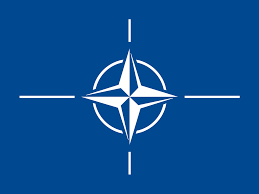
The United States Army is charting a new course for its aviation modernization efforts, setting a 2026 timeline for a critical demonstration of contenders for its Ultra Long-Range Launched Effects (ULR-LE) requirement. This initiative represents a significant doctrinal and technological pivot, accelerating the service’s push towards unmanned systems and extended-range capabilities, particularly in the wake of the recent cancellation of the Future Attack Reconnaissance Aircraft (FARA) program. The planned demonstration is not merely a technical showcase but a foundational step in redefining the role of Army aviation in future multi-domain conflicts, aiming to provide commanders with persistent sensing and lethal effects deep within contested enemy territory.
This strategic shift is designed to equip Army aviation with the tools to survive and operate effectively against peer adversaries equipped with sophisticated Integrated Air Defense Systems (IADS). By deploying ULR-LEs from manned platforms operating at safe standoff distances, the Army seeks to create a distributed and resilient network of sensors and shooters. This approach mitigates risk to high-value aircraft and personnel while extending the operational reach of the combined arms team, a core tenet of the Army’s Multi-Domain Operations concept.
Strategic Context: From FARA to Launched Effects
The Army’s intensified focus on Launched Effects (LE) is directly linked to the termination of the FARA program in early 2024. The decision to halt the multi-billion dollar reconnaissance helicopter program reflected a strategic reassessment of the modern battlefield, where survivability of manned platforms in close proximity to enemy forces is increasingly questionable. The cancellation freed up significant funding and engineering focus, which the Army has promptly redirected towards a portfolio of unmanned systems, with LEs being a primary beneficiary. The LE concept is structured in tiers—short, medium, and long-range—designed to be launched from air and ground platforms to perform a variety of missions, including intelligence, surveillance, and reconnaissance (ISR), electronic warfare (EW), and kinetic strikes.
The development of an ‘ultra long-range’ variant marks the most ambitious step in this strategy. While existing LE programs focus on ranges within a few dozen to over a hundred kilometers, the ULR-LE is envisioned to operate at ranges of several hundred kilometers. This capability would enable Army assets, such as AH-64 Apache helicopters or future vertical lift platforms, to influence areas previously accessible only by Air Force or Navy assets. It aligns with the broader Department of Defense emphasis on Joint All-Domain Command and Control (JADC2), where an Army ULR-LE could potentially provide targeting data for a Navy missile or an Air Force bomber, creating a truly integrated battlespace.
Operational Implications and Industry Competition
The operational impact of a successful ULR-LE system would be transformative. In a potential Indo-Pacific conflict, characterized by vast maritime and land distances, ULR-LEs could provide Army commanders with organic, long-range ISR and strike options, reducing reliance on other services. These air-launched drones could scout ahead of advancing units, locate and target enemy command posts or air defense nodes, and provide persistent electronic surveillance without exposing manned aircraft. This concept of Manned-Unmanned Teaming (MUM-T) is central to the Army’s vision, where the human crew of a helicopter acts as mission commanders for a swarm of autonomous or semi-autonomous systems.
The 2026 demonstration will serve as a crucial competitive event for the defense industry. Major contractors, who were previously competing for the FARA program, are now repositioning their investments and expertise towards unmanned systems. Key actors expected to contend for the ULR-LE requirement include established aerospace giants like Lockheed Martin, Northrop Grumman, and Boeing, as well as specialized unmanned systems manufacturers such as General Atomics Aeronautical Systems and Textron. The competition will likely focus on delivering a combination of range, endurance, advanced sensor payloads, and, critically, resilient and autonomous operation in GPS-denied and communications-contested environments. The Army’s requirements will push industry to innovate in areas of artificial intelligence for autonomous navigation and targeting, as well as secure, low-probability-of-intercept datalinks.
Future Outlook and Technical Hurdles
Looking ahead, the 2026 demonstration is a critical milestone that will inform a potential program of record. A successful event would validate the Army’s post-FARA strategy and likely lead to a formal acquisition program to field ULR-LEs in the next decade. However, significant technical and integration challenges remain. Ensuring reliable command and control over extreme distances, particularly against an adversary with sophisticated electronic warfare capabilities, is a primary hurdle. The autonomy required for these systems to operate effectively with minimal human intervention is another area of intense research and development. Furthermore, integrating these new systems into the Army’s existing network architecture and ensuring they can seamlessly share data with both legacy and future platforms will be a complex undertaking.
In conclusion, the Army’s plan for an ULR-LE demonstration in 2026 is a clear and decisive signal of its future direction. It represents a pragmatic adaptation to the realities of modern warfare and a firm commitment to leveraging unmanned technology to maintain a competitive advantage. The outcome of this event will not only shape the future of Army aviation but will also have profound implications for joint operations and the broader US defense posture in an era of renewed great power competition. The path forward is challenging, but the strategic imperative to project power at range with reduced risk is driving this critical innovation forward.


